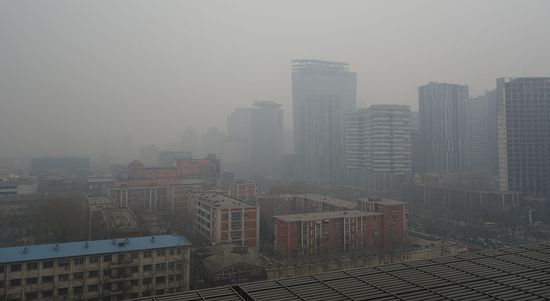Can Philanthropy Spur the Massive Climate Finance the Developing World Needs?
/
There’s perhaps no bigger climate-related challenge than the trillions in clean energy and sustainability investments needed in developing countries. How can private philanthropy possibly make a dent?
While reducing greenhouse gas emissions to curb climate change is a global challenge, in many ways, the energy futures of two countries, China and India, will shape the course of the planet.
India has a goal of bringing energy to more than 300 million people, a quarter of its population that currently lives in the dark. Meanwhile, China is urbanizing at breakneck speed, with its cities expected to house one in eight people on the planet by 2030. That kind of rapid development could translate either to a global expansion of clean energy or hundreds of new coal plants pumping carbon into the atmosphere.
The cost of choosing the right path is huge. For perspective, one analysis found the developing world will need $3.5 trillion to implement its pledges from the U.N. Paris Climate Agreement by 2030. Overall sustainable development needs are much larger.
As both a practical and moral issue—the West has already burned more than its fair share of fossil fuels, after all—wealthy nations need to shovel funds to developing countries to raise living standards while still reducing emissions.
Private philanthropy can’t pick up that bill (consider combined assets of the top 100 foundations in the U.S. are around $300 billion), but as the climate conversation is increasingly concerned with how we finance and roll out clean energy, some U.S. funders are trying to point the way forward.
Related: Sorry, Bill Gates, But Billions for Energy Research Is Not How to Win the Climate Battle
One recent initiative came about during Indian Prime Minister Narendra Modi’s state visit to the U.S., during which a series of joint climate-related announcements were made. As one result, four of the country’s largest climate funders, Packard, MacArthur, Hewlett and Grantham foundations, will make much larger investments in India’s clean energy market.
The funders are putting up $30 million, matched by the Indian government, for two projects. The first will work to make solar power projects “finance-ready,” basically clearing red tape in the form of feasibility studies, land surveys, and due diligence, so that large finance institutions can jump right in and bypass obstacles slowing progress. The second component will seed financing for such projects, acting as a kind of insurance that will reduce the risk that might otherwise scare off the global investment community. Together, the two projects are projected to catalyze up to $1.4 billion in investment.
One area of investment they hope to advance is so-called “minigrids,” or small-scale clean energy systems in rural and remote areas, disconnected from the country’s central power grids. Getting India to embrace minigrids fueled by solar energy would be a huge step toward demonstrating to the world that there’s a way to bring electricity to poor, rural areas that doesn’t involve the familiar path of firing up massive coal plants.
While technology has come a long way, whether minigrids take off has a lot to do with drawing funding from development investors, which can be scared off by uncertainty and logistics of them, such as having to vet several small projects at once. This investment mechanism could help get the ball rolling.
The second recent big news on this front comes from a group of U.S. funders and nonprofits, and Chinese banking and energy outfits, who put together a series of reports similarly urging “green finance” for cities in China.
The reports—commissioned by Bloomberg Philanthropies, with other partners including the Paulson Institute and Energy Foundation China—found that in just the next five years, about $1 trillion in investments will be needed for transportation, buildings, and energy so China can develop low carbon cities.
By 2030, more than 1 billion people are expected to live in Chinese cities, so much like India’s electrification, the global ramifications of how that unfolds are huge. The report is recommending public-private partnerships and a mix of public and private financing to sustainably advance that kind of urbanization.
Bloomberg Philanthropies has been a big champion of developing more climate finance opportunities, backing efforts like the Finance for Resilience (FiRe) initiative and the Global Innovation Lab for Climate Finance.
Another major U.S. funder working in this space is the Rockefeller Foundation, launching its own Innovative Finance program that seeks creative private investment mechanisms to “fill the gap” between aid and philanthropy budgets and sustainable development needs. Rockefeller has also been engaging in impact investing for clean energy in India, and has a goal of electrifying 1,000 rural villages in the country with a $75 million commitment.
Related:Smart Power: Rockefeller Steps Up Its Fight Against "Energy Poverty" in India
While overall investment needs may be more than foundations can cover by a longshot, that doesn’t mean they can’t throw their weight around to knock loose the kind of funds that can make a difference.
As Hewlett Program Officer Matt Baker stated in a blog post following the new India initiative:
Figuring out how philanthropy can attract private investment dollars into clean energy infrastructure could well be the single most important step we as a foundation can take to achieve our goal of protecting humanity by keeping the global temperature rise below two degrees centigrade.








